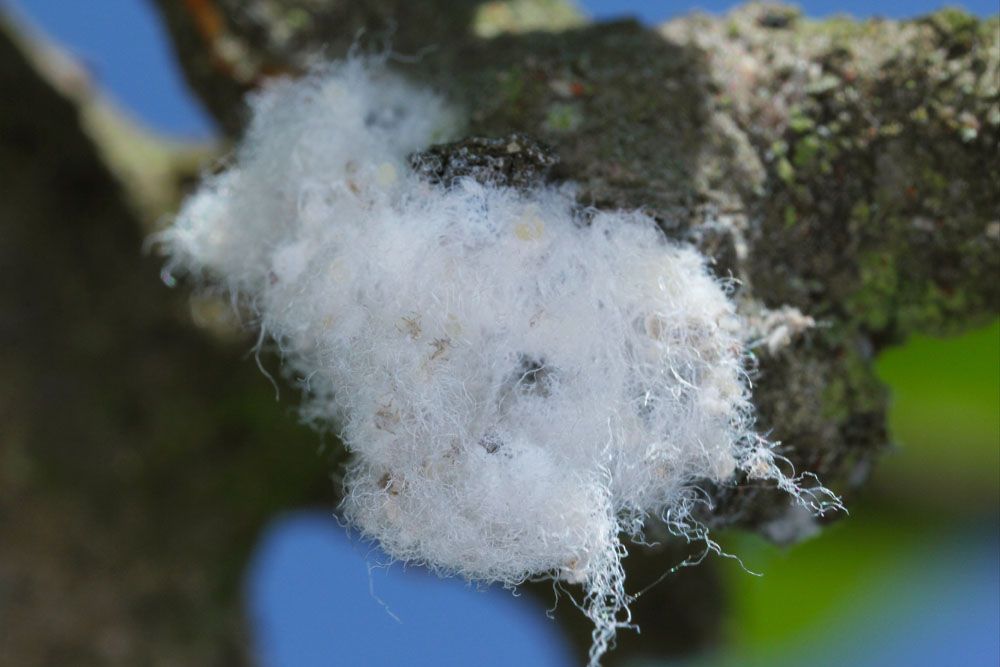
Woolly Apple Aphid – Eriosoma lanigerum
Woolly Apple Aphid – Eriosoma lanigerum
Common Name: Woolly Apple Aphid
Latin Name: Eriosoma lanigerum
Appearance:
Egg:
The egg stage is not known to occur in orchards in the Pacific Northwest.
Nymph:
The nymph is salmon-colored and loses the woolly covering shortly after birth. This is known as the crawler stage. After the aphid settles to feed, waxy filaments begin to develop. There are four nymphal instars, with lengths averaging 0.64, 0.67, 1.2, and 1.3 mm—dark brown to black eyes. The cornicles are round and very slightly raised from the abdomen’s surface.
Adults:
The adult’s color ranges from reddish-brown to purple. However, the actual color is frequently hidden under a white, cotton-like material released from the aphid’s abdomen. This trait distinguishes this aphid species from other aphid species seen on apples.
Host plant:
The woolly apple aphid has evolved to dwell and breed asexually on apples all year in most fruit-growing regions worldwide. Wingless males and females are born to winged females dispersing to elm. There is evidence that sexual reproduction happens on apples in New Zealand, but its significance has yet to be determined. Hawthorn, mountain ash, and cotoneaster are among the other hosts.
Damages caused by Woolly Apple Aphid:
Galls are frequently formed on contaminated wood. These galls have the potential to disfigure young trees and nursery stock severely. If the galls crack, harmful fungi such as Gloeosporium rots or apple canker may enter. Woolly aphid does minimal direct damage to mature trees, but the sticky masses of “wool” can taint leaves and fruits and be a nuisance during harvest.
Life history and habits:
Woolly apple aphid overwinters as a nymph on apple roots. It can also overwinter as an immature nymph on the tree’s above-ground parts, such as the trunk or major limbs. Above-ground colonies may be destroyed during harsh winters. Overwintering aphids generate live young that travel up and down the tree when temperatures rise in the spring. If above-ground colonies do not survive the winter, nymphs on the roots travel upward to offer a source of infection. During the summer, leaf axils on terminal shoots are preferred feeding places.In most cases, winged adults (alates) return to the overwintering host (elm) in the fall. Winged versions have been observed in woolly apple aphid colonies in Washington orchards in the fall. However, their destiny is unknown. The flying forms are considered part of the dispersion mechanism to other apple trees, although the scant data suggests that egg formation on apple trees is uncommon, and the eggs do not hatch.
